Three-dimensional printing with nano-enabled filaments releases polymer particles containing carbon nanotubes into air
- PMID: 30101413
- PMCID: PMC6398333
- DOI: 10.1111/ina.12499
Three-dimensional printing with nano-enabled filaments releases polymer particles containing carbon nanotubes into air
Abstract
Fused deposition modeling (FDM™) 3-dimensional printing uses polymer filament to build objects. Some polymer filaments are formulated with additives, though it is unknown if they are released during printing. Three commercially available filaments that contained carbon nanotubes (CNTs) were printed with a desktop FDM™ 3-D printer in a chamber while monitoring total particle number concentration and size distribution. Airborne particles were collected on filters and analyzed using electron microscopy. Carbonyl compounds were identified by mass spectrometry. The elemental carbon content of the bulk CNT-containing filaments was 1.5 to 5.2 wt%. CNT-containing filaments released up to 1010 ultrafine (d < 100 nm) particles/g printed and 106 to 108 respirable (d ~0.5 to 2 μm) particles/g printed. From microscopy, 1% of the emitted respirable polymer particles contained visible CNTs. Carbonyl emissions were observed above the limit of detection (LOD) but were below the limit of quantitation (LOQ). Modeling indicated that, for all filaments, the average proportional lung deposition of CNT-containing polymer particles was 6.5%, 5.7%, and 7.2% for the head airways, tracheobronchiolar, and pulmonary regions, respectively. If CNT-containing polymer particles are hazardous, it would be prudent to control emissions during use of these filaments.
Keywords: 3-D printing; carbon nanotubes; elemental carbon; emission rate; lung deposition modeling; polymer.
© 2018 John Wiley & Sons A/S. Published by John Wiley & Sons Ltd.
Figures
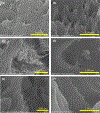
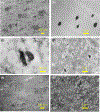
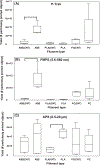

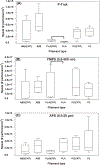
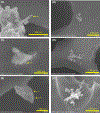
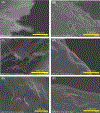
References
-
- Wohlers. 3D Printing and Additive Manufacturing State of the Industry: Annual Worldwide Progress Report. Ft. Collins, CO: Wohlers; 2016.
-
- Azimi P, Zhao D, Pouzet C, Crain NE, Stephens B. Emissions of ultrafine particles and volatile organic compounds from commercially available desktop three-dimensional printers with multiple filaments. Environ Sci Technol. 2016;50(3):1260–1268. - PubMed
-
- Deng Y, Cao SJ, Chen A, Guo Y. The impact of manufacturing parameters on submicron particle emissions from a desktop 3D printer in the perspective of emission reduction. Build Environ. 2016;104:311–319.
-
- Floyd EL, Wang J, Regens JL. Fume emissions from a low- cost 3-D printer with various filaments. J Occup Environ Hyg. 2017;14(7):523–533. - PubMed
-
- Kim Y, Yoon C, Ham S, et al. Emissions of nanoparticles and gaseous material from 3D printer operation. Environ Sci Technol. 2015;49(20):12044–12053. - PubMed
MeSH terms
Substances
Grants and funding
LinkOut - more resources
Full Text Sources
Other Literature Sources

